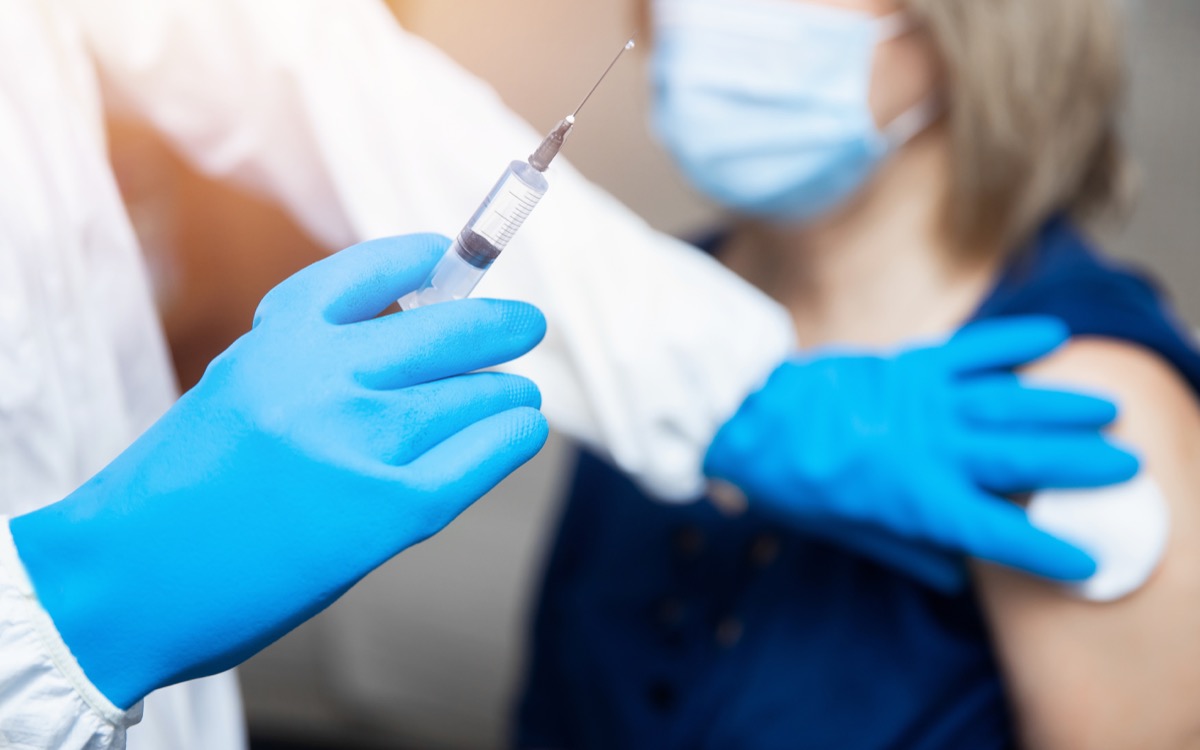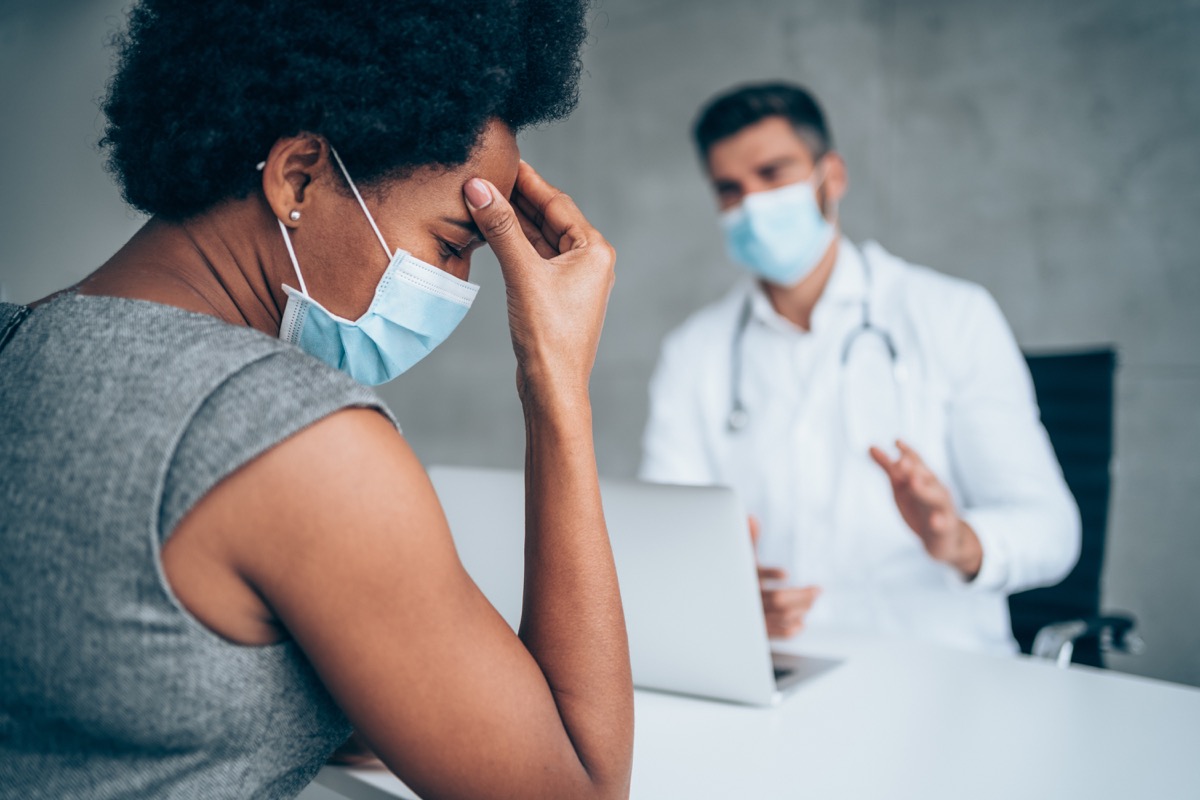On April 13, the CDC and the U.S. Food and Drug Administration (FDA) released a joint statement that noted the risk of developing a type of blood clot called cerebral venous sinus thrombosis (CVST) in combination with low levels of blood platelets (thrombocytopenia) after receiving the Johnson & Johnson vaccine. The CDC site has now been updated to include symptoms of CVST to be aware of. “People who have received the J&J/Janssen COVID-19 vaccine within the past three weeks who develop severe headache, abdominal pain, leg pain, or shortness of breath should contact their health care provider,” the site warns. While this reaction appears to be extremely rare, it’s important to know the signs. According to Johns Hopkins Medicine, other symptoms of CVST to look out for include blurred vision, fainting or loss of consciousness, loss of control over movement in part of the body, and seizures. Responding to CVST quickly makes it easier to recover. And for more vaccine news, Dr. Fauci Says This Is How You Can Catch COVID Even If You’re Vaccinated. While it’s essential to listen to your body and contact your health care provider if you feel like something is wrong, it’s also worth noting that some of the symptoms of CVST overlap with general COVID vaccine side effects. According to the CDC, common side effects from the vaccine include headache and muscle pain, which could be confused for CVST symptoms. However, CVST symptoms may manifest within one to three weeks of vaccination, while vaccine side effects should go away within a few days of the shot. Regardless, if you’ve received the Johnson & Johnson vaccine and feel that your pain is unusually severe, it’s best to consult your doctor. And for more common vaccine reactions, Moderna Caused This Reaction in 82 Percent of People, New Study Says. After six reports of CVST and thrombocytopenia in people who received the Johnson & Johnson jab, the CDC and FDA statement called for a pause in the use of the vaccine “out of an abundance of caution.” The statement from the two agencies said the recommended pause will continue until after they investigate the situation further. The CDC plans to meet with the Advisory Committee on Immunization Practices (ACIP) on April 14 to review the cases and assess their significance. Following that, the FDA will review that analysis and perform its own investigation.ae0fcc31ae342fd3a1346ebb1f342fcb “Right now, these adverse events appear to be extremely rare. COVID-19 vaccine safety is a top priority for the federal government, and we take all reports of health problems following COVID-19 vaccination very seriously,” the statement reads. And for more COVID vaccine news delivered straight to your inbox, sign up for our daily newsletter. Because this vaccine reaction is so rare, you don’t need to panic if you’ve had the Johnson & Johnson shot. However, it’s a good idea to monitor yourself, particularly if you’re a woman under 50. According to the CDC and FDA statement, the six reports of CVST and thrombocytopenia following the Johnson & Johnson vaccine were all from women between the ages of 18 and 48 years old, and their symptoms appeared within six to 13 days of receiving the vaccine. And for more on vaccine reactions, Doing This After Your Vaccine Can Make Side Effects Worse, Doctors Say.



